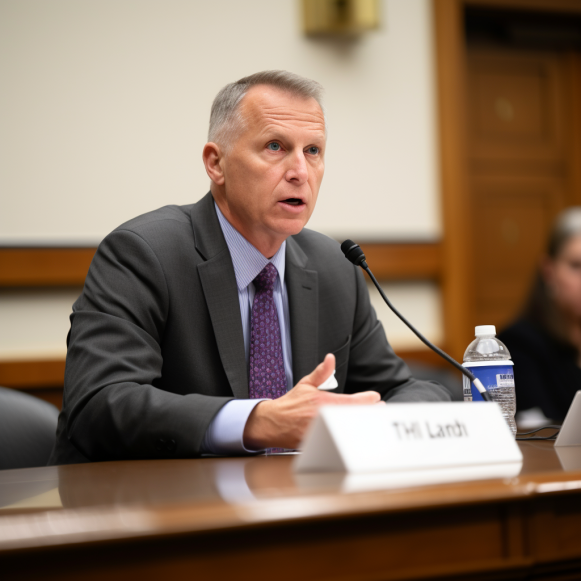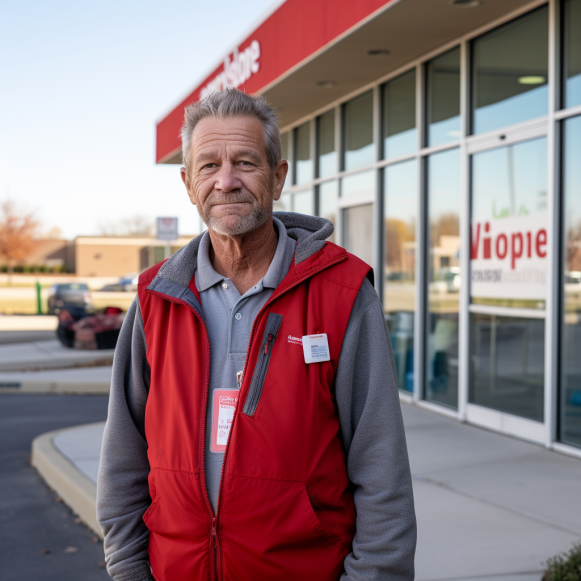A third of schools don’t have a nurse. Here’s why that’s a problem

Jodi Bobbitt, the school nurse at William Ramsay Elementary in Alexandria, Virginia, is always ready to see children who have been injured or ill. The parade began before the first bell one day during the first week of school, when a little girl walked in with red, irritated eyes.
Then things got hectic.
A student tripped while playing tag and another fell from the monkey bars. Two kids collided with lunchboxes and required ice packs. A young boy was suffering from stomach pain. Bobbitt also saw her regular students, including one with special needs who uses a wheelchair and another with diabetes who has his blood sugar checked daily before lunch.
“Every day, I’m seeing more and more [youngsters],” Bobbitt, a certified nurse practitioner, said, smiling. “I saw more today than yesterday, so we just have to wait and see what the year has in store.”
Bobbitt’s responsibilities as the only school nurse at this suburban Washington, D.C., elementary school go beyond treating scraped knees and sniffles for the school’s 600 students. She administers medications, teaches children about health care, and performs routine health screenings at her under-the-sea-themed clinic. She also serves as a public health point person as the school nurse, tracking student vaccinations, connecting parents to local health care resources, and communicating sometimes difficult messages to them, such as warnings about sexually transmitted diseases and signs of depression.
Bobbitt considers herself fortunate despite having a full plate. She previously worked as a school nurse in two different buildings within the same school district for three years. What hasn’t changed is that school nurses play an important role in keeping students healthy and ready to learn, but it’s an underappreciated field for which schools struggle to attract and retain staff.
According to a 2021 survey by the National Association of School Nurses, more than a third of schools in the United States do not have a full-time nurse on staff. Schools without a dedicated nurse either share one with another campus or do not have one at all. Meanwhile, the country is dealing with high rates of chronic illnesses such as diabetes and asthma among K-12 students, as well as an unprecedented mental health crisis among youth, and school nurses are on the front lines — often alone.
The roles of school nurses were complicated further by covid-19. They’ve been tasked with tracking cases and tracing exposures since the pandemic began. During the pandemic, “an extreme amount of work was placed on the shoulders of school nurses,” according to Kate King, president of the NASN.
They were caught in the crossfire between anti-maskers and maskers, as well as anti-vaccine and pro-vaccine parents, and were the point of contact whenever students were quarantined. “School nurses are used to interacting with angry parents,” said King, but “that anger just got to levels we had never seen before” as a result of the pandemic.
When students do not have access to a school nurse, their attendance and learning can suffer. “You’re going to see more absences,” she predicted, citing a study published in the Journal of School Nursing that found students with illnesses or injuries were sent home 18% of the time when evaluated by an unlicensed school employee, but only 5% of the time when evaluated by a school nurse.
Teachers and administrators are shouldering some of the burden by learning how to treat injuries and illnesses on their own, but “it doesn’t take the place of having a school nurse who can respond immediately,” according to King.
Though no federal law requires schools to have nurses on staff, the Centers for Disease Control and Prevention recommends at least one full-time nurse for every 750 students enrolled — a recommendation that most states fall far short of. According to the Public Policy Institute of California, school nurses in California have one of the heaviest workloads in the country, with a student-to-school-nurse ratio of 2,410 students for every nurse.
According to Child Trends, California, along with 34 other states and the District of Columbia, requires school nurses to be employed. Twelve of them mandated nurse-to-student ratios. Nurses are encouraged to work in schools in seven states. Eight states do not have mandates in place.
Despite this, schools were scrambling to hire nurses over the summer.
According to Jessica Sawko, director of education for Children Now, a nonprofit organization based in California, schools struggle not only to retain nurses but also to encourage aspiring nurses to consider working in schools. Districts cannot compete with the salaries and benefits provided by hospitals. The national median salary for school nurses is nearly $55,000 per year, but a registered nurse can earn nearly $30,000 more in a hospital setting.
School nurses in some states must obtain additional certification in addition to their nursing degrees.
As a nurse for junior high students, King is well aware that school nurses are often students’ only point of contact with a health care professional, particularly on her campus.
King works at World Language Middle School in Columbus, Ohio, which has a diverse student body and accepts many students who are new to the country. “So that requires school nurses like myself to have a very broad range of knowledge of diseases and symptoms,” she went on to say.
Another layer to this issue, according to Robin Wallin, director of school health services for Alexandria City Public Schools, is that school nursing “is an aging cohort.” The district has at least one school nurse on each of its 18 campuses, but filling every position was difficult this year. She attributes this to the fact that many school nurses are reaching retirement age. “We need to start to replenish our cohorts.”
Bobbitt claims that the nursing students who shadow her rarely envision themselves working in a school. “They want to work in the ER, they want to work in the hospital, they want to work in the NICU, or somewhere where they can have that adrenaline,” said Bobbitt. “This is a little different,” she admitted, adding that it is fast paced in its own right.
Robin Cogan, a clinical coordinator at Rutgers University’s School Nurse Specialty Program in New Jersey, said one of the most difficult learning curves for nurses who choose to work in schools is that they are “often an independent practitioner,” which requires juggling many responsibilities.
Meanwhile, Bobbitt, working in her brightly colored clinic, remains focused on her daily mission: to meet the needs of the students as soon as possible. “We don’t want them to miss very much school or much class work,” Bobbit went on to say. “That’s our goal, right?”





